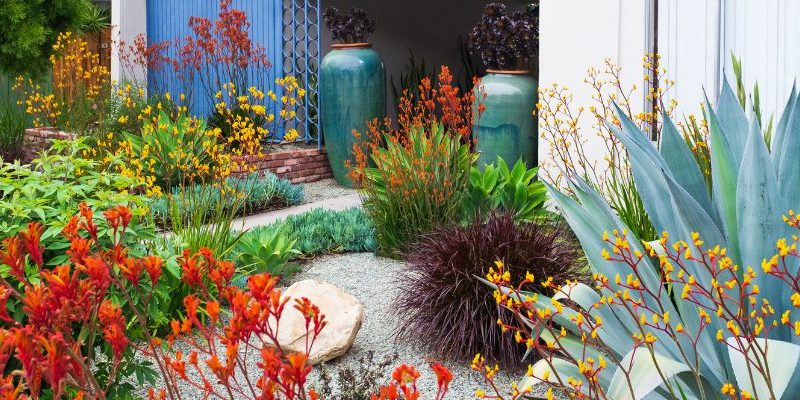The value and aesthetic appeal of native plants are being more recognized in the field of landscape design. These native plants contribute significantly to the promotion of biodiversity and environmental friendliness in addition to improving the visual attractiveness of outdoor areas. Let’s explore how Pristine Connections uses native plants to create bright and sustainable landscapes by delving into the realm of native plants in landscape design.
Table Of Content
Embracing the Beauty of Native Plants
Celebrating the Diversity of Native Flora
Native plants are the backbone of natural ecosystems, and their beauty comes in myriad forms. From the delicate blooms of wildflowers to the majestic stature of native trees, these indigenous species offer a diverse palette of colors, textures, and shapes that can rival any exotic import. Embracing native plants in landscape design allows homeowners to showcase the unique beauty of their local environment while creating landscapes that are truly one-of-a-kind.
Harmonizing with the Surrounding Environment
Arid Climate Landscaping often requires careful consideration of water conservation and resilience in the face of harsh environmental conditions. Native plants are uniquely adapted to thrive in these challenging climates, making them ideal choices for sustainable landscaping solutions. By selecting plants that are indigenous to the region, homeowners can create landscapes that harmonize seamlessly with the surrounding environment, requiring minimal maintenance and resources to flourish.
Creating Habitat for Native Wildlife
Native plants are not only beautiful to behold but also provide essential habitat and food sources for native wildlife. By incorporating native species into landscape designs, homeowners can attract a diverse array of birds, butterflies, and beneficial insects, fostering a thriving ecosystem right in their own backyard. From providing nesting sites for songbirds to offering nectar-rich flowers for pollinators, native plants play a vital role in supporting local wildlife populations.
The Ecological Benefits of Native Plant Landscaping
Supporting Biodiversity and Ecosystem Health
Native plants are integral to the health and resilience of ecosystems, providing food and shelter for a wide range of wildlife species. By incorporating native plants into landscape designs, homeowners can help preserve and enhance biodiversity in their local environment, ensuring the long-term health and stability of natural ecosystems. From restoring degraded habitats to preventing soil erosion, native plant landscaping offers a host of ecological benefits that extend far beyond the boundaries of individual properties.
Conserving Water and Reducing Pollution
Pristine Connections emphasizes environmental stewardship, and native plant landscaping aligns perfectly with these values. Unlike non-native species, native plants are well-adapted to local soil and climate conditions, requiring minimal irrigation and fertilization once established. By reducing the need for supplemental watering and chemical inputs, native plant landscapes help conserve water resources and minimize pollution of waterways, promoting a healthier and more sustainable environment for future generations.
Mitigating the Effects of Climate Change
As climate change continues to alter weather patterns and exacerbate environmental challenges, the importance of native plant landscaping becomes increasingly apparent. Native plants have evolved to withstand the extremes of weather and climate, making them more resilient in the face of changing conditions. By creating landscapes dominated by native species, homeowners can help mitigate the effects of climate change by preserving genetic diversity, sequestering carbon, and promoting ecosystem resilience.
Designing with Native Plants: Tips and Considerations
Researching Local Species and Ecosystems
When incorporating native plants into landscape designs, it’s essential to research and select species that are well-suited to the local climate, soil, and ecosystem. Consider consulting with local botanical gardens, native plant societies, or extension offices for guidance on suitable species and design techniques. By understanding the natural history and ecological requirements of native plants, homeowners can create landscapes that thrive with minimal intervention.
Creating Naturalistic Plant Communities
Native plants often occur in naturally occurring plant communities characterized by their specific soil types, moisture levels, and sun exposure. When designing with native plants, aim to replicate these naturalistic communities by grouping species with similar habitat preferences together. By mimicking the structure and composition of natural ecosystems, homeowners can create landscapes that are not only visually appealing but also functionally resilient and sustainable.
Integrating Native Plants into Existing Landscapes
Whether starting from scratch or renovating an existing landscape, incorporating native plants can be a rewarding endeavor. Begin by assessing the site conditions and identifying opportunities to replace non-native or invasive species with native alternatives. Gradually introduce native plants into the landscape, focusing on areas where they are most likely to thrive and make a significant impact. Over time, as native plants become established, they will contribute to the overall health and beauty of the landscape while promoting biodiversity and sustainability.
Final Wording
Native plants offer a wealth of benefits for landscape design, from promoting biodiversity and eco-friendliness to enhancing the beauty and resilience of outdoor spaces. By embracing the use of native plants in landscape design, homeowners can create vibrant and sustainable environments that harmonize with the natural world. Through the principles of Arid Climate Landscaping and a commitment to environmental stewardship embodied by Pristine Connections, native plant landscaping becomes not just a design choice but a reflection of our deep connection to the land and our responsibility to preserve it for future generations.
FAQ’s
While native plants can attract a variety of wildlife, including beneficial insects and birds, they are not necessarily more prone to pest infestations than non-native plants. Proper maintenance and monitoring can help manage any potential pest issues.
Yes, many native plants are well-adapted to drought conditions and thrive in arid climates. Examples include desert marigolds, agave, and desert spoons. These plants can add beauty to your landscape while conserving water.
Native plants are often well-suited to the native soil conditions in their region, but some may benefit from soil amendments or improvements. Conduct a soil test to determine any deficiencies or pH imbalances and amend the soil as needed before planting.
Yes, many native plants are well-suited to coastal environments and can thrive in salty or sandy soils. Coastal native plants like beach sunflower, sea oats, and seaside goldenrod can help stabilize dunes, prevent erosion, and provide habitat for coastal wildlife.







